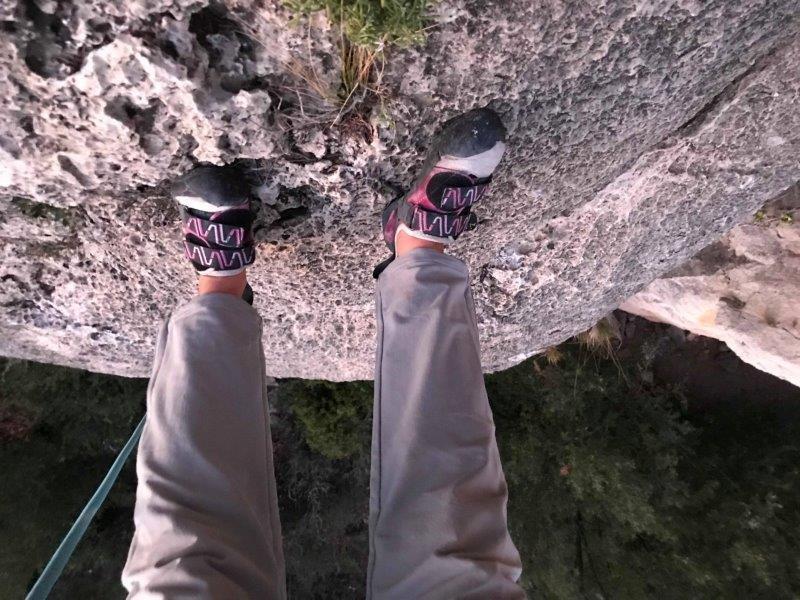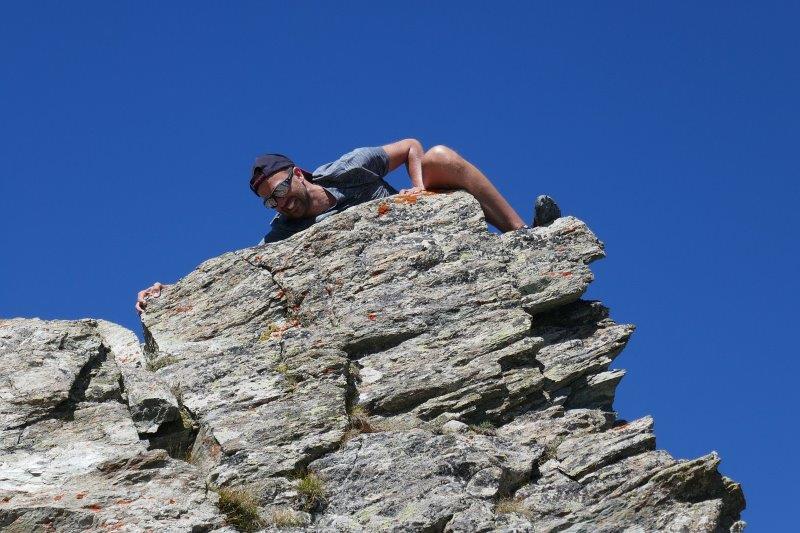Bouldering is a great way to stay fit and have fun, but it can also be accident-prone if you’re not careful. Minor and major injuries including broken/ twisted bones as well as structural joint damage to fingers and shoulders are common among boulderers, but there are ways to prevent them. Follow these tips to stay safe while bouldering.

Establish a Comprehensive Warm Up
Bouldering can be a great way to improve overall body strength and flexibility, but it is important to take the necessary precautionary steps in order to prevent injury. Before beginning any bouldering session, it is important to understand your own body’s limitations as well as the demands that are put on your body when you are climbing.
Warming up with gradual movements and stretches that gently increase your range of motion is an important part of preventing strain on muscles and joints. Incorporating exercises specific for bouldering like core work, balance drills, and total-body strengthening exercises into your warm-up routine can also help you prepare for your climbing session and reduce the likelihood of injury to your shoulders or back.
By taking the time to warm up correctly before each bouldering session, you’ll be able to safely maximize its benefits and enjoy this exciting activity with confidence.
Learn How to Fall and Land Properly
One of the important precautions to avoid leg or back injuries is understanding and practicing the correct technique for falling and landing. To minimize the risk of injury, it’s essential to keep your body as close as possible to the wall during a fall, reduce any sudden shifts in momentum by maintaining a balanced and upright position throughout. When falling, cushion your landing with bent legs, and never stretch or put your hands or arms out to break your downward momentum.
Landing correctly requires planning ahead. Make sure you plan your route and approximate landing on the crash mat below before starting up a boulder. These strategies will help prevent major injuries such as busted ankles or torn knees when falling from bouldering. While this won’t guarantee an injury-free climb, it’s an important step in making each session safer and more enjoyable for you and your friends!

Be Realistic About your Capabilities
It’s important for newcomers and experienced climbers alike to push themselves without going too far and compromising safety. It can be tempting to take on a route that looks seemingly fun and challenging, but this carries the risk of painful and serious injury if the route is too high above your climbing grade and you aren’t prepared to fall safely. Being reckless and trying climbing routes too difficult for your current skill level could lead to tendonitis, joint strain or even fractures due to overstretching or sudden falls.
Rather than attempting something beyond your possibilities, focus on perfecting your rock climbing and bouldering techniques in a climbing gym or controlled environment that you know you can do with reasonable safety. You will enjoy a safe and enjoyable bouldering experience when you make sure your challenges do not lead to danger.
In order to minimize the risk of injury, it’s wise to start with routes that are slightly more challenging than what you know you are comfortable with, half a grade or 1 grade higher than your average. ( Eg. 5.9 instead of 5.8) Each success will give you the confidence and motivation needed in order to progress towards more demanding goals. With dedication and patience, you’ll soon be able to explore new routes and experience unprecedented heights!
Hone your Technique and Skills in Low Stakes Environments
Learning and mastering the intricate techniques of bouldering can be a daunting task, with variations in techniques like sitting in, smearing and traversing and the list is seemingly unending. The best way to improve is to give new skills and techniques the old college try in low-stakes environments where there is plenty of padding or crash mats; this will help you perfect your form before trying more challenging climbs. Additionally, it’s important to stay flexible and listen to what works for other climbers with more experience; often, pointers from those who have accumulated more knowledge, trial-and-error through practice, can help hone form, even at beginner levels.
Bouldering is not just about being strong – it takes finesse from movement technique to tackling different styles of holds – so breaking up skills into digestible chunks can make all the difference on difficult routes. In short, getting out there and actively practising is the key to improving skills necessary for conquering tougher boulder challenges.

Make Sure to Give Yourself Sufficient Rest Periods
When it comes to bouldering―or any outdoor sport for that matter―it’s important to practice self-care and pacing in order to help prevent major injuries.
One of the most common causes of major injuries is fatigue. It takes time for the body to adapt and respond to the particular stresses placed on its various muscle groups, so understanding your own limits and taking intermittent rest periods will help prevent excessive strain on your muscles.
If you are pushing yourself too hard and don’t take ample rest throughout your climb, then you’re likely to find yourself with a lot of painful muscles at the end of the day. Of course, stiffness and soreness the next day is natural, but any more than that can indicate that you need more breaks during future climbs. Fatigue is one of the biggest culprits behind serious injuries while bouldering, so it’s wise to take measures rather than pressing through adversity and risking injury.
Practice caution and moderation–– listen carefully to your body’s signals while ensuring you’re taking necessary precautions before taking off on another climb. All these measures will help make sure injury risks are minimized during these outings!
Build a Toolkit of Moves and Styles that you Can Rely On
Bouldering is a thrilling way to push yourself both physically and mentally, involving climbing up relatively short rock walls without the use of ropes or harnesses. It offers climbers of all skill levels the opportunity to challenge themselves in unique and dynamic ways.
It’s important to know that the more varied your experiences, the better prepared you can be when facing extreme situations while bouldering. A climber with diverse experience will have extensive knowledge on a wide range of styles, moves, problem-solving techniques, grades, and terrain types. This means that you can make informed decisions about how to approach any situation – such as how best to grab ahold of a hold or what route would be most suitable – giving you greater confidence when tackling tough problems or steep climbing paths.

By expanding your repertoire of technical abilities and approaches, you can better protect yourself from taking unnecessary risks; so if you want to stay safe and get the most out of your bouldering experience then make sure to try different styles and techniques whenever possible!
Develop the Safety Mindset
There are a lot of little things you can do to make sure that you are as safe as possible.
Finger injuries are a common occurrence, so make sure to warm up or at times, wear the right-hand protection to prevent jamming or breaking your fingers when attempting a crack climb.
If you are climbing with a partner or a group, you should rely on a spotter. Each person can take turns monitoring and if necessary helping fellow climbers in the middle or especially difficult parts of the boulder climb.
Always make sure that you are aware of your environment, and avoid falling on areas with sharp rocks where injuries are likely to be far more devastating.
Takeaways
While bouldering is an inherently dangerous activity, with the proper precautions it can be a much safer sport. Make sure to always take the necessary safety measures, like using a spotter and wearing a helmet, and learn the best techniques to avoid injuries in the long term.
If you boulder responsibly and are aware of the risks involved, you can minimize your chances of getting hurt while enjoying one of the best sports out there.

No Comments